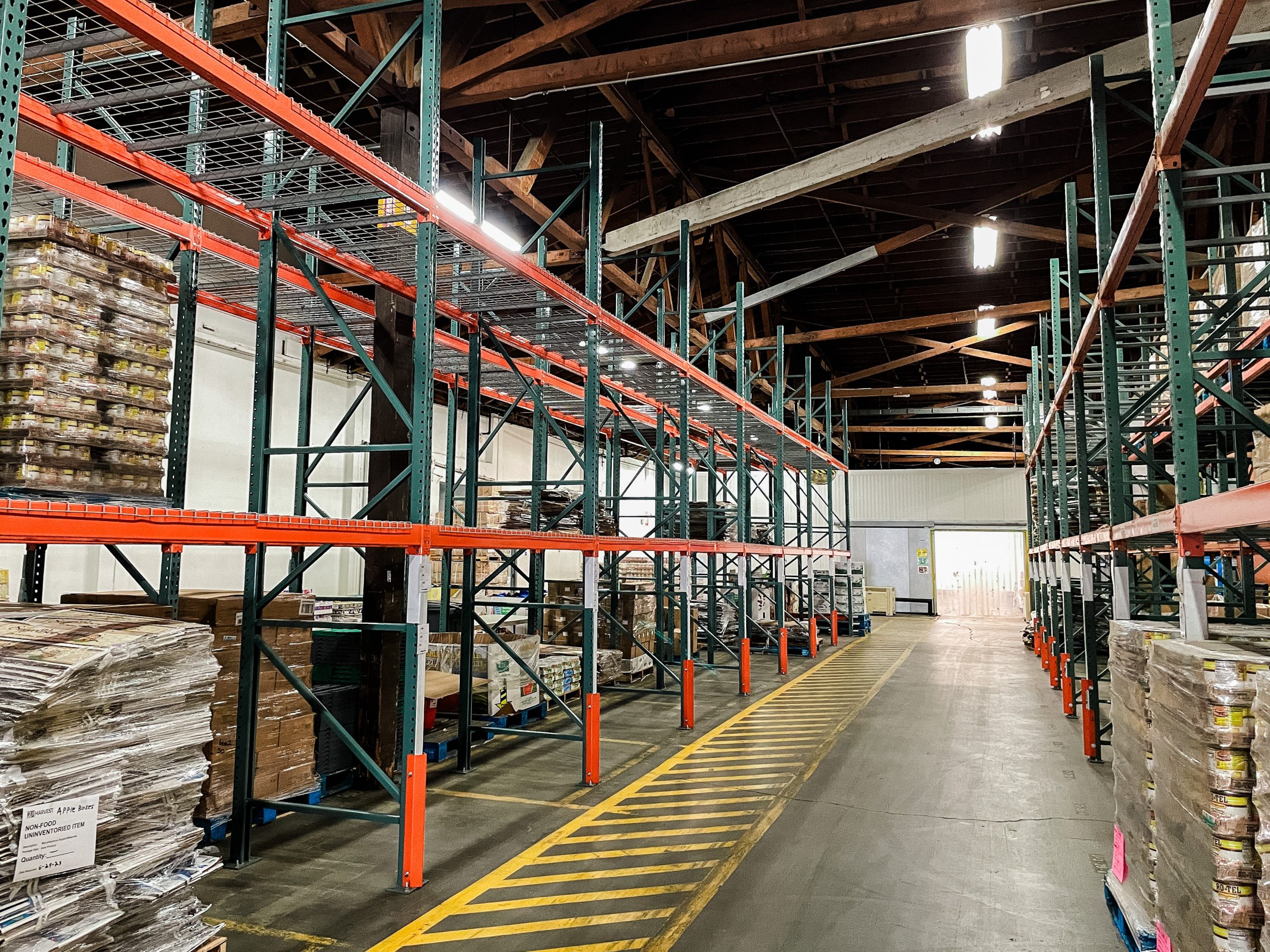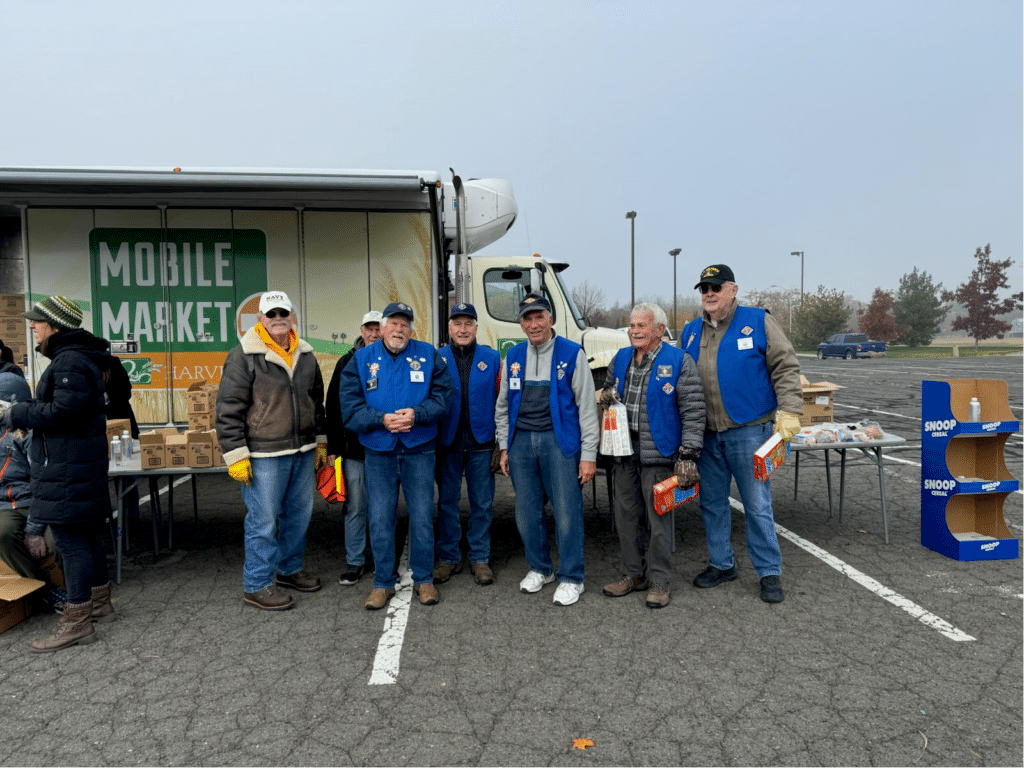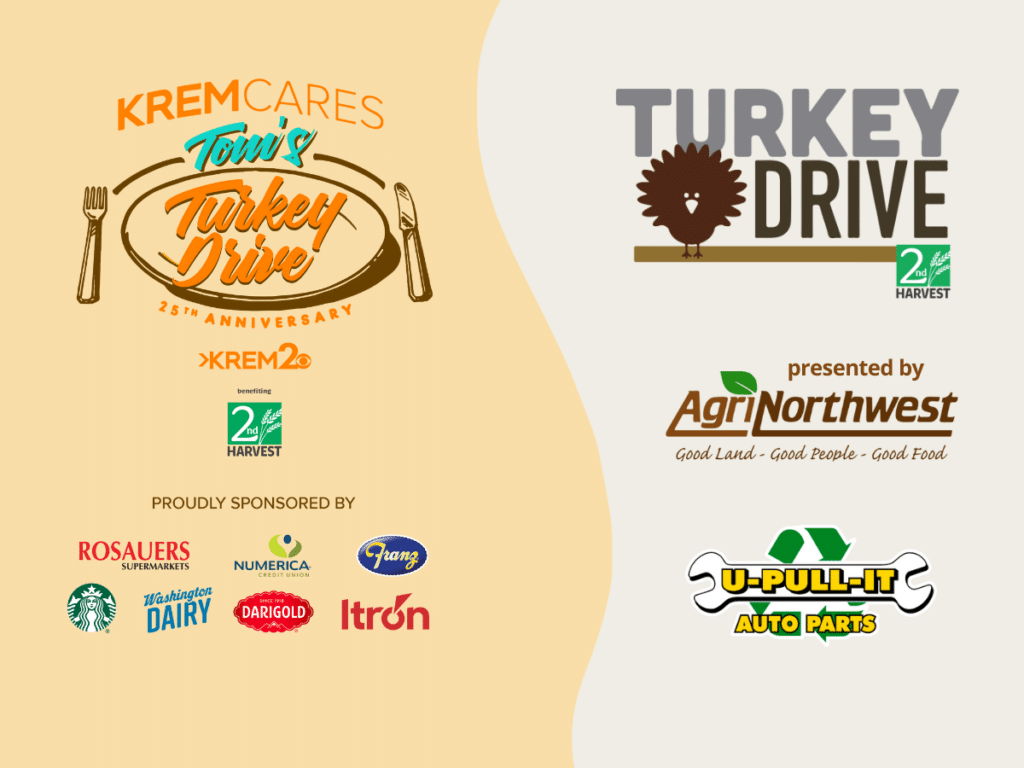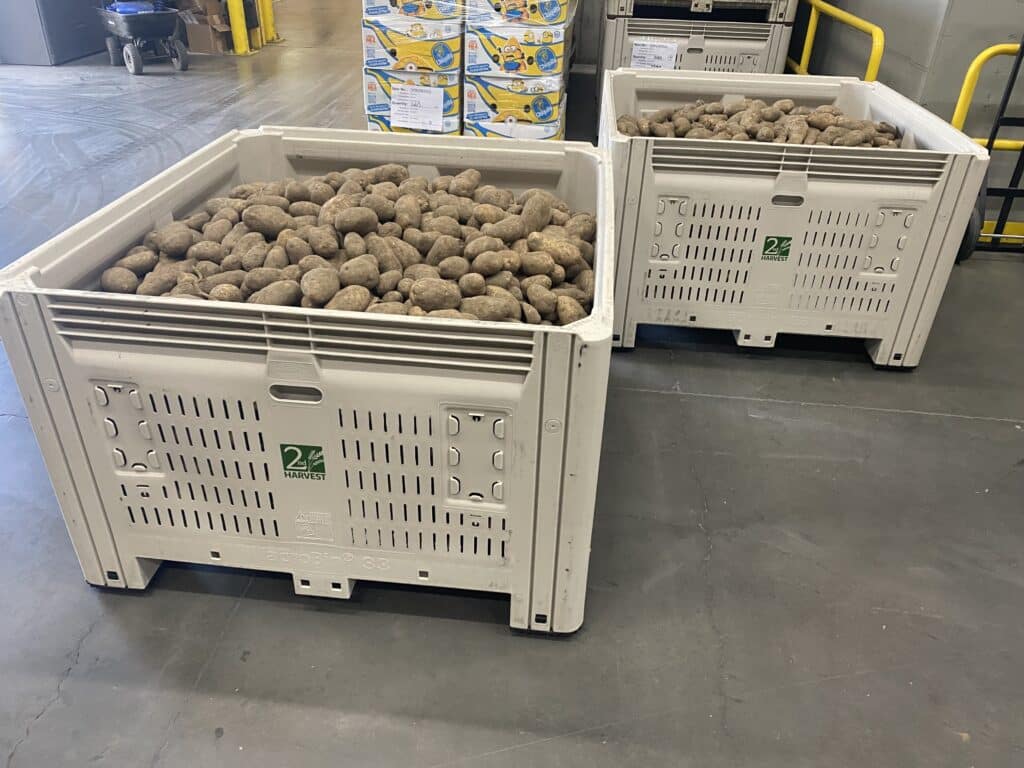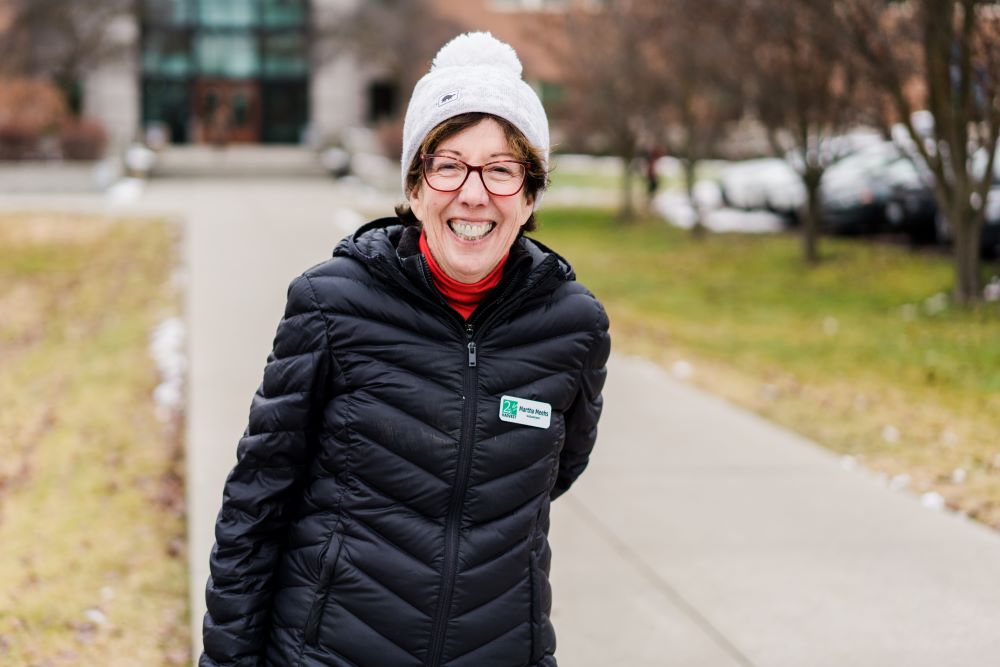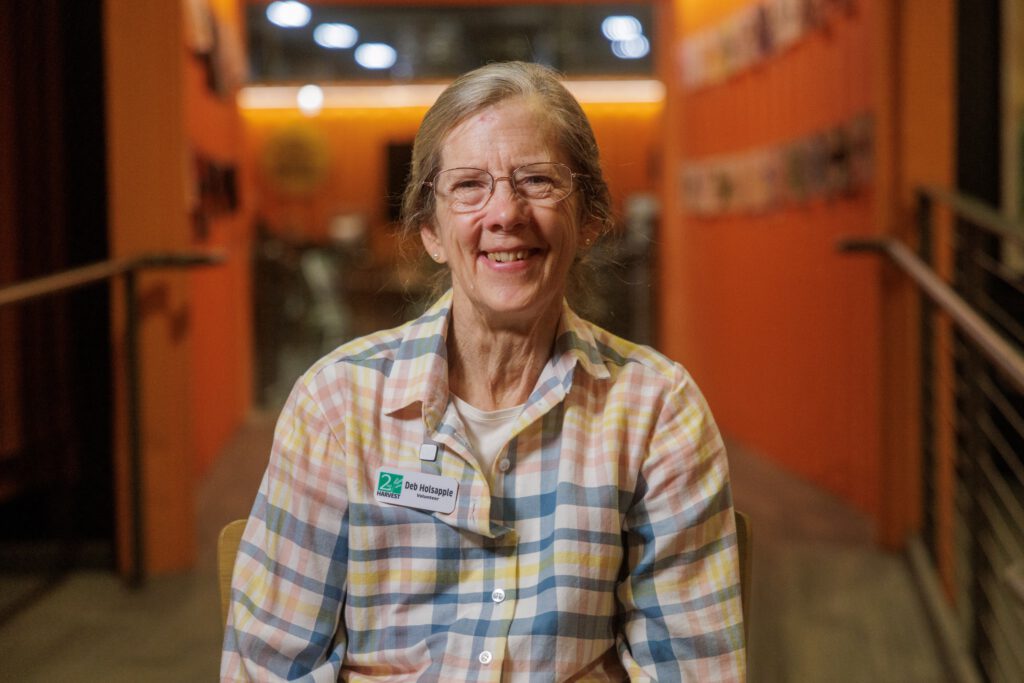Food Bank Challenges – July 28
Author: Eric Williams
The Foodbank of Southeastern Virginia and the Eastern Shore is on the far other side of the United States but is facing challenges that are frighteningly similar to those we’re encountering at Second Harvest Inland Northwest.
“We’re seeing about a 20 percent increase in our lines as compared to two years ago which was the height of COVID, and so the need is greater and the food is lower.”
That’s according to Christopher Tan, the CEO and president of the Southeastern Virginia food bank in a July 7 story on WTKR TV news. The story added that the food bank has the lowest stock of food they’ve seen in a long time.
While reinforcing, it’s anything but comforting to know that food banks across the country are facing challenges that are strikingly similar to those Second Harvest is working to overcome.
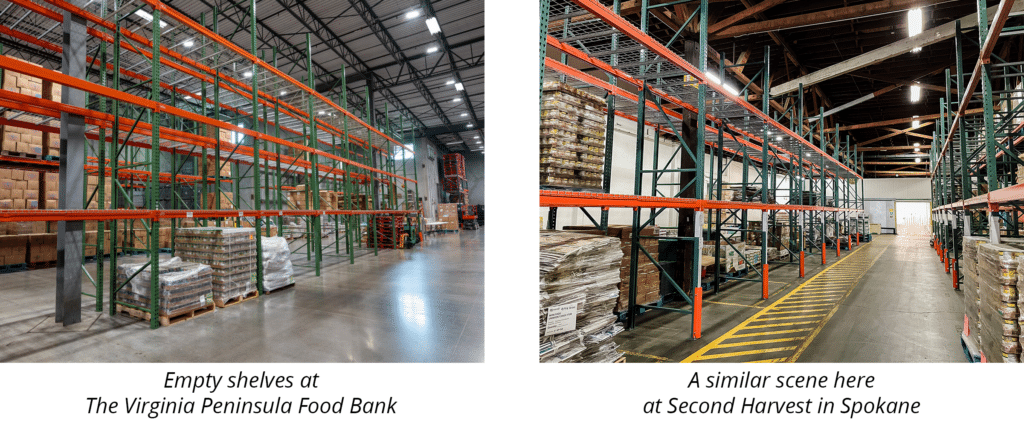
Meanwhile, the Atlanta Business Journal reported that in March the Atlanta Community Food Bank served its one-billionth meal, which CEO Kyle Waide described as both “sobering and exciting.” That story went on to note:
“Current economic woes are weighing on low to moderate-income families who are dealing with inflation at the same time Covid-era benefits are winding down.
“In response, the food bank has coordinated with its 700 partners, food suppliers and government officials to make the case: ‘We’ve got a tsunami coming and we’re going to need help,’ Waide said.”
In late June, San Francisco KQED public radio and TV carried a story with the headline, “Bay Area Food Banks, Feeding More People Than Ever, Face Lack of Volunteers.” It included this assessment from Rachelle Mesheau, marketing and communications manager at the Redwood Empire Food Bank:
“At the current pace, we will serve more people this year than at any point in our 36-year history. It is costing us more to serve our participants due to price increases in food and gas, and we are having to buy more food to meet the demand,” she said. “On top of that, donations are down, which is adding fuel to the fire. It’s a challenging time for food banks.”
A scan of stories on the web immediately reveals more of the same. In Tucson, the story is “Community Food Bank expands hours as demand for emergency food increases.” In western Pennsylvania, it’s “Westmoreland County Food Bank sees increased demand,” while in the far northeast, the “New Hampshire Food Bank fights new, ‘disconcerting’ obstacles to food security.”
Closer to home, the Missoula Food Bank is changing its rules for accessing its services. In July the local newspaper carried a story with the headline, “Missoula Food Bank sees record demand, plans to limit visits.”
We are a partner food bank in the nationwide Feeding America network, and the organizations above are directly or indirectly linked to Feeding America. Claire Babineaux-Fontenot, CEO of Feeding America, recently said, “The collective efforts of the public and private sectors have helped to mitigate a national hunger crisis brought on by the pandemic in 2020, but the reality remains that 1 in every 6 people look to food banks and pantries for support as they work hard to provide for themselves and their families.”
Just within the past 10 days, stories of food bank struggles have come from the Midwest, often referred to as our nation’s breadbasket. They include:
Des Moines, Iowa:
Des Moines food pantries set “staggering” records
Cleveland, Ohio:
Food banks struggle to meet demand, as pandemic relief ends for thousands of Ohioans (msn.com)
Marshalltown, Iowa:
Food bank sees one-third increase in people served
Feeding America’s Babineaux-Fontenot added that across the country, “Local food banks, pantries, and community meal programs have become an essential component of many households’ food budgets, especially as we continue to face increased food prices and the end of pandemic-era benefits.”
CONTACT US
FOOD NEAR ME
DONATE
VOLUNTEER
facebookinstagramtwitterlinkedinyoutubetiktok
Feeding Eastern Washington and North Idaho
Copyright 2020 Second Harvest. All rights reserved.
